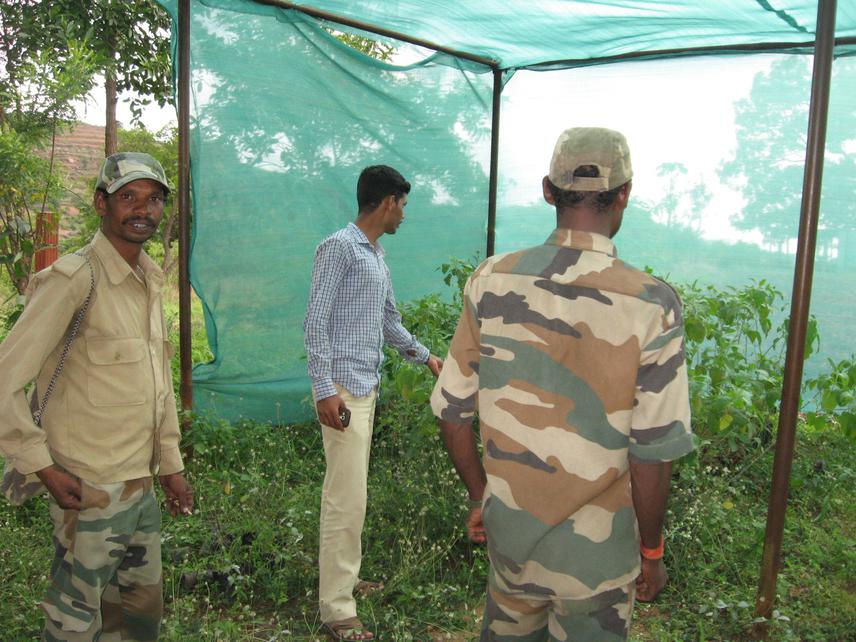Harisha Ranganahalli
The project intends at conserving rare endangered and threatened wild plant species by building awareness and training programs among harvesters, building local institutional network to popularize among villagers in Male Madeshwara Hills Reserve Forest.
My foremost activity starts by community group meetings at village level to document plant species, resource mapping and traditional harvesting practices. Interviews with harvesters and focus group interviews with elders helps to develop a comprehensive management plan to conserve target species in Male Madeshawara Hills reserve forest.

Forest dept. officials visit to Nursery.
In parallel the literature survey that includes official records from the forest department and other concerned departments will facilitate to understand the existing management systems. Gathering information from popular articles and research papers helps to evaluate the existing practices and state management systems. This also will help us to develop outreach material.
Outreach material which I develop will be in the form of booklets, posters, and fliers which highlights the importance of the species status, habitat preference, outcomes of the meeting, merits/demerits of the present harvesting methods, management system, propagation methods and techniques. This outreach material will help in building awareness on target species, its sustainable utilization, protection and management.
Next step I would be establishing a nursery to raise saplings and supply seedlings to farmers, community groups, schools and households. This would showcase the propagation and planting techniques which become a training centre for harvesters and local community who are willing to plant in large scale in their agriculture land and backyards.
Further step would be capacity building workshops for harvesters and other stakeholders at village level, by using outreach materials and best sustainable harvest methods. This will help gatherers to be aware of the dos and don’ts during harvesting.
Later popularizing the programme through network building among Grama Sabha, community groups and other local institutions using outreach materials engages them in planting seedlings in agriculture bunds, backyards, school gardens, and degraded forest lands.
Monitoring and evaluation of success/failure, impacts on population of target species, using data and information collected throughout the process. Whole lot of information and learning will be put together and published in a popular journal which would be a resource material to develop further conservation action plan.